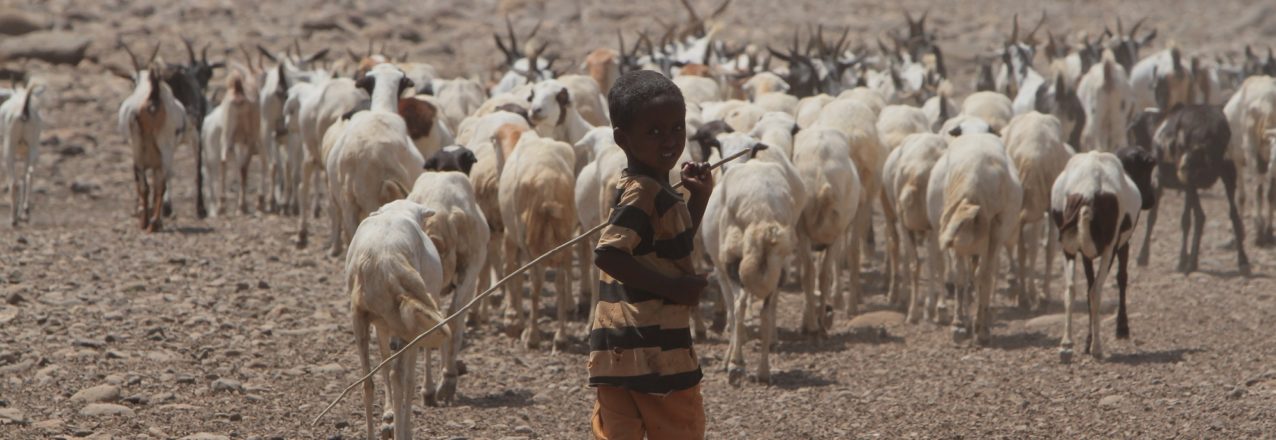With a predominantly agrarian economy, land has been and will continue to be an important production asset for both farmers and pastoralists in Ethiopia. After a long period of feudal and customary land ownership, all land became public property in 1975 subject to long-term use rights. Still, a number of challenges to tenure security remained, and in the late 1990s, the Government of Ethiopia (GOE) launched the first ever land certification program to register farmlands held by rural households. Although this “first level” land certification had a number of important impacts on tenure security and land use practices on farms, a joint GOE-USAID assessment in 2004 indicated a need to improve tenure security by introducing cadastral maps and modern land registration.
Since 2005, USAID has invested a total of $20 million, through three consecutive programs, to strengthen land rights, build capacity, and map and certify individual and community lands across much of Ethiopia. The first two programs—the Ethiopia Land Tenure and Administration Program (ELTAP – 2005-2008) and the Ethiopia Land Administration Strengthening Program (ELAP – 2008-2013)—piloted and introduced improved second level land certification with cadastral maps in select woredas (districts) of the four highlands regions (Amhara; Oromia; Southern Nations, Nationalities, and Peoples; and Tigray).
Encouraged by the results of these projects, the GOE expanded second level certification in partnership with other donors, including the governments of Finland, Sweden, and the United Kingdom (UK), and the World Bank, and moved to invest an additional $150 million to expand second level land certification for millions of small-scale farmers.
For its part, while USAID has shifted its focus to registering communal land in pastoral areas, we decided to conduct an impact evaluation of ELTAP and ELAP to learn more about the impacts of second level land certification on women’s rights, credit and land access, and perceptions of tenure security and inform our support to land certification in Ethiopia and many other countries. Despite the significant effort associated with the impact evaluation, I am happy that we made a very important decision to invest in this study.
Firstly, the exercise allowed our Mission to learn more about impact evaluation design and execution. Impact evaluations need carefully designed scopes of work, a sound hypothesis and assumptions, precisely identified variables and indicators, and well-crafted surveying tools. We learned a lot from the endline process and even thought in retrospect that the baseline could have been done a bit differently. For example, we learned how important it is to ask questions in a way that small-scale farmers can easily answer, to complete baseline data collection before field activities begin, and to incorporate expertise from Government officials, academic experts, and other development partners.
We also learned how critical it is to carefully review the evaluation design in light of the program implementation process so that the design can be revised to capture any changes in implementation not anticipated in the original evaluation design. For example, since the delivery of certificates is beyond the manageable interest of our projects, many of our beneficiaries had their land surveyed but had not yet received a certificate at the time of the endline. As such, we revised the evaluation design to study whether having your land surveyed alone as compared to also receiving a certificate affects farmers’ outcomes. The support provided by our colleagues in Washington helped move the impact evaluation in the right direction and get it done on time.
Secondly, the impact evaluation also identified critical lessons from our programs within a short interval after ELTAP and ELAP implementation. For example, we found that second level land certification led to a 10 % increase in the likelihood of accessing credit, an 11 % increase in landholding, a 44 % increase in women’s decision- making over crops, and an 11% increase in the likelihood of households believing they have the right to bequeath land to their heirs. Given that farmers already enjoyed improved tenure security while transitioning from no certification to first level land certification, second level certification might not have been expected to show radical improvements in tenure security. Nonetheless, the evaluation highlighted other complementary reforms, for example to mortgage and rental regulations, that could increase the impact of second level land certification on farmers’ investments and livelihoods.
Finally, I know that USAID, the Government of Ethiopia, and other development partners are already considering the results of this impact evaluation and how to integrate them into the design of future programs. For instance, the evaluation recommends further legal reforms to allow land to be used as collateral to enable farmers to benefit from increased credit access with their land certificates. In reviewing the evaluation findings, the GOE noted that their new project with the UK is testing pilots that allow for mortgaging land use rights, so our findings support this theory of change. There are likely to be many opportunities to support other complementary reforms in on-going and future land administration programs to ensure that the benefits from second level land certification are fully realized and sustained.
Read more:


